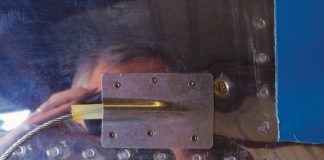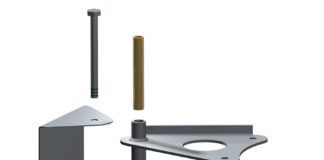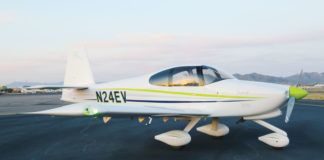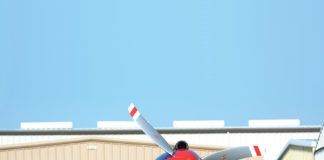
Lam Best
Many of us know portable radios work poorly in many aircraft. But never before have I seen the reasons behind it explained to us in such a clear and eloquent manner, together with the means of rectifying the problem and important tips so that we stay out of expensive problems (such as transmitting without the antenna hookup). That was a great column by Jim Weir (“Aero ‘lectrics,” April 2011). I am keeping it for reference.
Tony Lam
Time Flies
In the Engine Buyer’s Guide (April 2011), you compare several engine options for kit planes. I found this very informative. However, one thing I think you missed was the TBO on the engines. Cost, weight and number of units delivered gives a sense of reliability and performance, but the other side of that is engine maintenance. An engine with a TBO of 1000 hours that costs the same as an engine with a TBO of 1500 or 2000 hours might not be the best choice. It would be nice to see the TBO in the list for comparison.
Brian Schneidmiller
Engine TBO (time between overhaul)recommendations vary, but the vast majority of the conventional aircraft engines are rated at 2000 hours. Rotax recently announced that the 912 series, at a certain mod status, is also good for 2000 hours. Something to keep in mind is that TBO is stated as hours and years-a 20-year-old engine with 1000 hours is not necessarily halfway through its life. It could be ready for overhaul by then, based on actual wear. TBO is a reasonable number to consider, but it isn’t the only determiner of engine longevity. Other factors, including variables in the installation and your maintenance practices, will determine the real TBO.-Ed.
Bent Metal
Just been reading your story on “Building on a Budget” by Scott M. Spangler (April 2011). The photo at top right on Page 20 caught my eye. Looking at the skin on the top of both wings, I saw that it is wrinkled, maybe through structural damage or having been overstressed. I’ve seen similar damage where owners were operating beyond design gross weights. I’d be interested to get the author’s and owner Wayne Clagg’s views.
John Washbrooke
The skin wrinkling you see is not uncommon with aircraft using very light-gauge skins to reduce weight. Also, low light amplifies the condition.-Ed.
Rotary Go-Round
If Mark Hull had bothered to visit my web site (www.rotaryeng.net) before he attempted to impugn my credentials [in the May 2011 KITPLANES Letters column], he might have discovered that I have been heavily involved with racing cars as an engineer starting in 1965. Actually, I go further back than that as a mechanic on dirt-track racing cars in New Jersey at the age of 12. In college I was a part-time foreign-car mechanic. I am familiar with piston engines indeed.
He might also have noticed that I have written magazine articles and technical papers on race cars for several professional organizations such as the American Institute of Aeronautics and Astronautics. I am not an A&P; I am an engineer. My wife is a retired A&P with 20 years’ experience at TWA and United Air Lines. I hold pilot licenses in the U.S. and Australia. Of course, I have flown in the rear of an MD-80, as I have visited more than 30 countries worldwide.
Mazda rotary engines were first successfully used in aircraft in 1973. I have owned six Mazda rotary-powered cars since 1973, and I have edited the Aircraft Rotary Engine Newsletter since 1998. Mazda has won more 24-hour sport car endurance races than any other brand, winning the 1991 Le Mans outright-with a fuel limit no less. That car’s engine was disassembled and inspected after the race and showed no measurable wear; piston engines are typically junk after such a race.
Paul Lamar
Free Flight Feedback
Paul Dye really says it well in “Soul of the machine” (April 2011, Page 64). What a wonderful description of what goes on in our brains as we fly the machines we built! It couldn’t have been expressed more clearly.
John Koser
Static Charge
I enjoyed Paul Dye’s article “The times they are a-changing” in the March 2011 issue and agree wholeheartedly with his conclusions. But one thing I wish he had addressed is the static buildup on composite airplanes, especially during a heavy rain. A friend lost his nav/com and autopilot because of these conditions. All electronics are susceptible to ESD (electrostatic discharge) unless properly protected, and this could eliminate the redundancy we try so hard to build into our systems.
Len Spina
Missing Bob
Bob Fritz’s writings were always one of the first that I turned to with each issue of KITPLANES. He taught me a lot about workshop practices and machining-and life-with his insightful, humorous writings and factual, down-to-earth style. My sympathy to his family and large circle of friends and admirers. He will be sorely missed in the aviation and flying community.
John Butler
We miss him, too.-Ed.
Write to [email protected] or mail a piece of your mind to:
KITPLANES, P.O. Box 315, Ashland, OR 97520.




